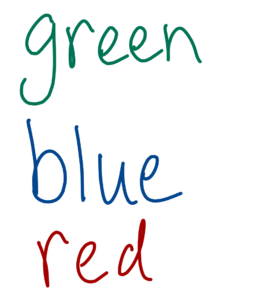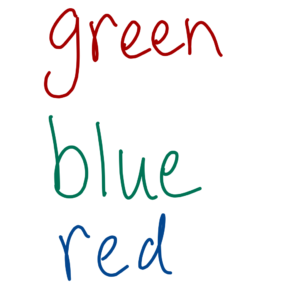Audible noise is easy to identify. We’re all familiar with needing a particular sound space to think more clearly and to set a mood. Some of us like the background noise of a bustling coffee shop, a buzzing fan, or an instrumental playlist. Others prefer complete silence – the absence of audible noise. What’s less familiar is visual noise and how it may affect our thoughts.
What is Visual Noise?
My idea of visual noise is any source of visual distraction. It involves external objects that are not directly related to a current goal. The most prominent source of visual noise is a cluttered environment. For example, my ideal writing space consists of a notebook, a laptop, and a flat writing surface (table, desk). Anything else in the space would likely serve as a distraction. If my unmade bed is in my workspace, I may feel inclined to make it or to go to sleep. If my TV is in the same space, I might turn my attention to the television instead of my prose. One of the most notorious sources of visual noise tends to go “seemingly” unnoticed: the label.
Why I Debrand My Property
Labels are advertisements. They are designed to make us think about a given product each time that we encounter it so that we purchase more of that product. Although subtle, this constant reactivation can interrupt our thought patterns. For example, if I wake up in the morning with the mindset to mentally set intentions for my day, I don’t want to be interrupted by the label on my toothpaste or my soap dispenser. To avoid these momentary breaches in thinking, I de-label all products when possible.

This allows for more peace in my morning and throughout my day because I know that my thoughts are MY thoughts, not something imposed upon me from a product.
How Exactly Can Visual Noise Disrupt Our Thoughts?
Once we learn to read, it is an automatic process. Looking at this article prompts you to read the text, but not necessarily think about the shape or color of the font. In fact, the Stroop Test, a well-known task in Psychology research, demonstrates this exactly (try it for yourself here). In the Stroop Test, volunteers are asked to read the names of colors (green, blue, red) while the words are in the same color font as their text. For example, the color green is in green font. In the second stage of the task, the volunteers are asked to name the color, not read the font. The colors are different than that of the text. Now, the word “green” may be presented in red font (see example below). Volunteers are much slower to name the colors for this task, and often make errors, reading the text instead of naming the color.


The take-away here is that Reading is Automatic. When we see text, such as a brand label, logo, or document, we have a tendency to read that text. This can disrupt the current thinking pattern. Restoring the previous flow of thought will take time and effort. We can avoid these interruptions by de-labeling products and organizing our workspaces. When we declutter our external environment, this helps to declutter our mind.
Make your inputs intentional
There are many things competing for our attention, and in effect, our time. We can consciously choose what we give our attention to by eliminating those things that are not worth our attention. I challenge you to take a mindful approach to what product packaging lives in your space, what advertisements you consume, and the contents of your external environment. Be selective about what you allow to enter your mind, and hence, to influence your thoughts.
To Learn More:
- What the Stroop Effect Reveals About Our Minds
- Psychological perceptions matter: Developing the reactions to the physical work environment scale
- The Case for Finally Cleaning Your Desk
To make a donation:





Pingback: Your Health Should Be Your Number One Priority, Here’s Why - the mindful comedown